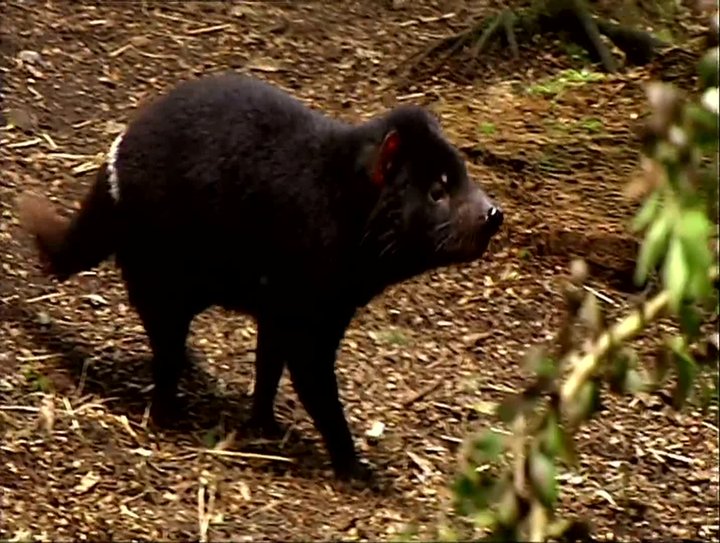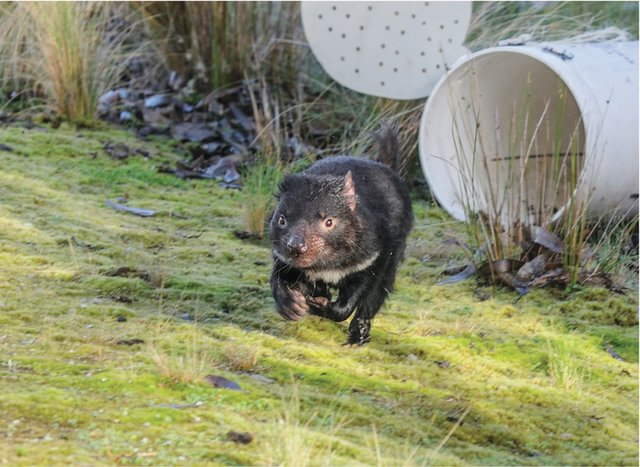IntheWild
Devilsarenocturnalandusuallysolitary.Butthatchangeswhenfoodisaround.Devilshaveanexcellentsenseofsmell.Theycansmellcarrionfrom0.8kilometers(abouthalfamile)away.Oncetheysmellit,theycantrackit fast.
Tasmaniandevilsusetheirexcellentsenseofsmelltoavoidpredatorsandlocatepreyand carrion.
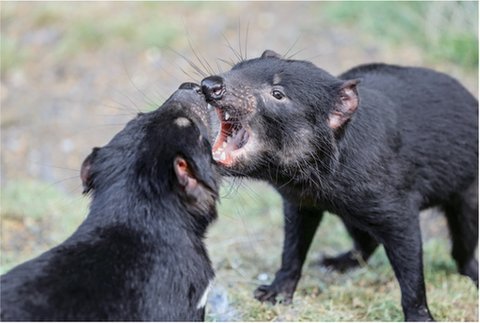
TheseTasmaniandevils“talk”over dinner.
Devilsquicklycreateanorderaboutwhoeatswhat—andwhen.They“growl-whine.”They“screech.”They“shriek.”Eachsoundmeansadifferentthing.A“discussion”aboutadeadwombatmightbeginwithsnortsandendwithshrieks.Say,anumberofdevilsallwanttoeat.Theycombinetheirsoundswithbiting.Theyusetheirjawstosnapateachother.Andthat’swheretrouble began.
TroubleinTasmania
In1996,aphotographertookapictureofsomedevilsontheisland.Therewerelargegrowthsontheirfaces.Hehadneverseenanythinglikeit.Heshareditwithsomescientistsheknew.By2002,scientistslearneditwasararetypeofcancer.Thiscancercanspreadfromoneanimaltoanother.Itiscalleddevilfacialtumordisease.Anditisfatal.Sayonedevilhasitandbitesanother.Bothwillbesickwiththe cancer.
Scientistsknowthatdevilsoftenbiteeachotherfightingforfood.Thiscausedthediseasetospread quickly.
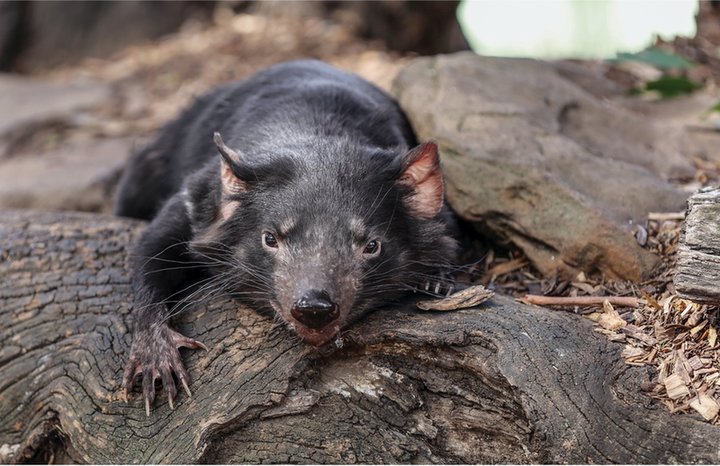
AcancerspreadsbetweenTasmaniandevilswhensickanimalsbitehealthy ones.
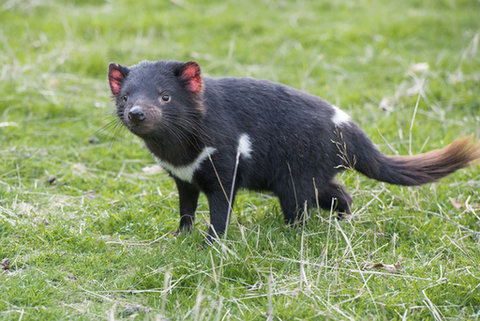
ayoungTasmanian devil
Whydidn’tadevil’sbodyfightthecancercells?Itturnsoutthatthistypeofcancercan“hide.”Thedevil’sbodythinksthecancerispartofitsbody.So,itsbodydoesn’tfightback.Thecancercontinuestogrow.Itmaygrowsolargethatthedevilcannoteat.Thenthedevilwill starve.
Devilsweredyingingreatnumbers.Scientistsfearedthedevilwoulddieout.But,that’snotwhat happened.
ProgressWithProtection
Wildlifeofficersremovedhealthydevilsfromthewild.Theybeganacaptivebreedingprogram.Now,ahealthypopulationwould thrive.

Captivebreedingprogramsmadesuredisease-freedevilswouldlive on.
Thisdevilisreleasedfromatrapthathelpsscientistswatchoverits health.
Anotherstepwastosetupsafetrapsforcatchandreleasetorecordthedevils’health.Inthelab,scientistsstudiedthedisease.Couldtheyfindmedicinetoprotectdevils?Somedevilsareregainingtheirhealth.Theirbodiesmaybeadaptingtofightthedisease.Scientistsarehopeful. TherecoveryofTasmaniandevilsis important!
